Travel Route Planning Made Simple with Story Maps, Story maps are a creative way to integrate storytelling and geographic data, enabling users to see events, experiences, and manage plans on an interactive map combine narrative text, multimedia, and maps to produce a dynamic, captivating format that improves comprehension and sharing. Users can view events, experiences, and travels on an interactive map thanks to story maps, which are an inventive way to combine storytelling and geographic data. They create a dynamic, engaging format that enhances understanding and sharing by fusing narrative text, multimedia, and maps. MAPOG provides an interactive and engaging platform for map creators and planners to make interesting story maps and itineraries for proper travel route planning.
Key concepts:
- Wildlife Visualization and Tourism Experience: The travel route from Kolkata to Manas National Park offers a life-changing experience where rich local culture, picturesque landscapes, and exciting wildlife encounters meet immersive ecotourism.
- Lush Green Tea Gardens of Assam: The travel route to Manas National Park reveals Assam’s verdant tea gardens, illuminating the route with tranquil, fragrant scenery that enhances the trip.
- Tribal Interactions and cultural exchange: Travel route planning in the light of Manas National Park offers enriching tribal interactions and cultural exchanges, especially with the Bodo community, deepening the traveller’s connection to Assam’s heritage.
- Geographical Diversity: As one moves from the travel route planning facilitates the view of Gangetic plains to the Himalayan foothills, passing through a variety of landscapes and ecosystems, the journey from Kolkata to Manas National Park deepens one’s understanding of the diverse geography of Assam.
What is the Use of Travel route planning using Story Maps:
Using a proper story map for travel route planning indulges a captivating and educational format, travel route story maps enable travellers to visually recount their experiences, fusing geography with first hand knowledge to help others comprehend routes, landmarks, cultural insights, and emotional connections.
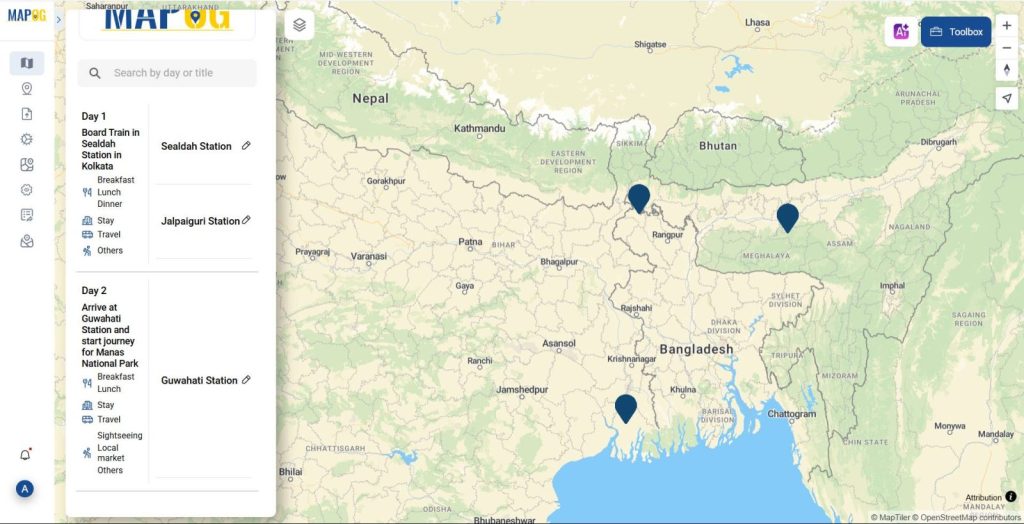
Following points can be used to describe the use of Story maps in travel route planning:
- Visual Clarity– Travel route planning using story maps Clearly depicts geography, stops, and routes.
- Interactive Layers – Travel route planning highlights, notes, and images to maps.
- Customisable Itineraries– Travel route Plans are adjusted to fit interests, financial constraints, and schedules.
- Better Decision Making – Travel route planning can be visually compared to make better decisions.
- Improves Safety – Proper It identifies safe areas, hospitals, and rest areas. Collaborative planning makes it simple for families or teams to make plans together.
- Real-World Preview – Provides a sense of the flow of the journey prior to departure.
Steps to Map the Travel route planning on Story Map:
1. Access MAPOG’s Mapping Platform
Visit MAPOG platform in your browser.
Click on “Create New Map” in the top- right corner of the homepage to start creating your own map.
Place the following details on your map:
- Add Title of your map. Description telling us what it’s about. And a nice Image to symbolize your theme of the travel route.
- After that, click Save.
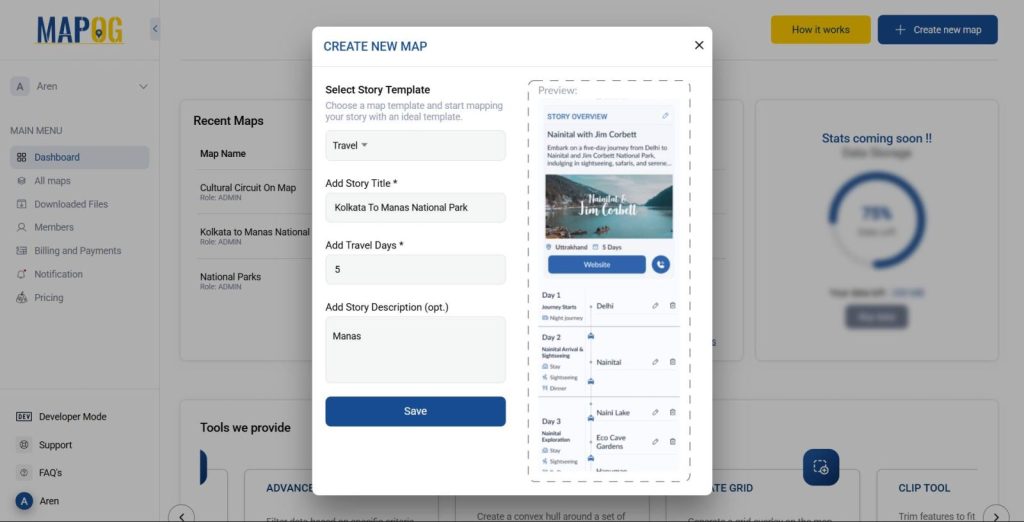
2. Add a Story Point
Click on “Add Story” and then click on “Add Point”
- Select “Manually”.
- Locate the point on the map.
Stick with the default settings and enter the following for proper travel route planning :
- A Title for the point (like the name of the destination),
- A Description about the location for suitable travel route,
- And a clear Image representing that place.
When you’re done, click Save.
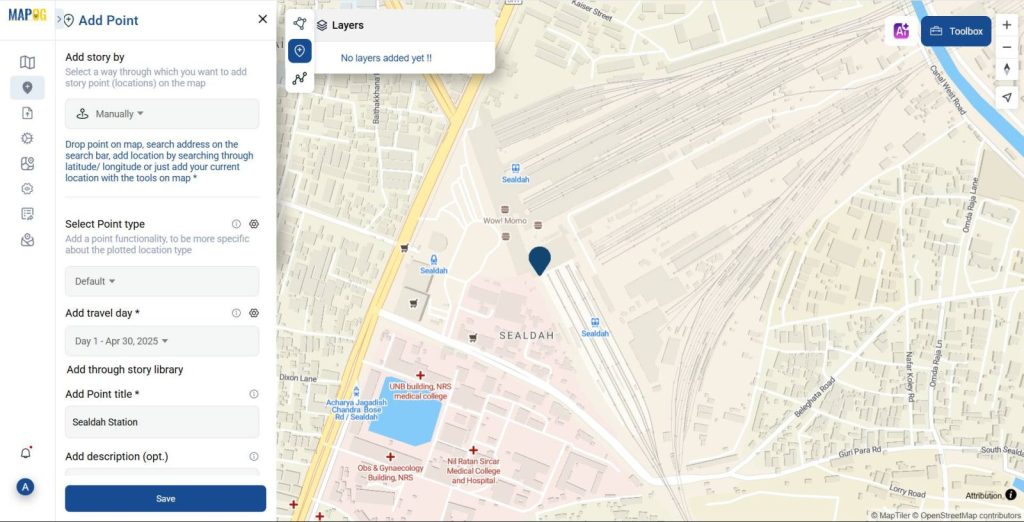
3. Add More Travel route destinations or Points:
Repeat the steps above to add all the destinations in your itinerary for a suitable travel route.

4. Customize the Points:
Use the location connection feature to display the routes and visually describe the mode of transportation and essential for effective travel route planning.
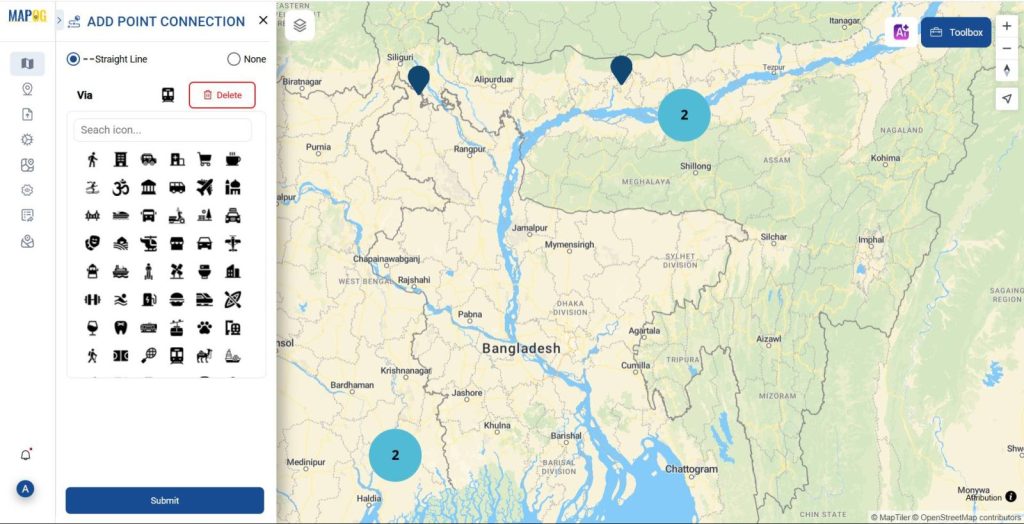
5. With the help of the publish and share option, you can share it and distribute it to anybody.
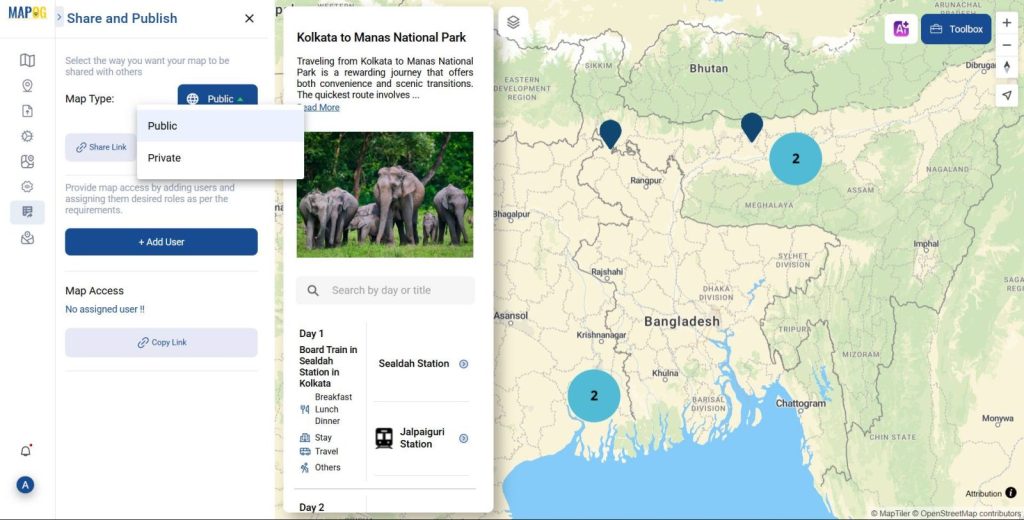
Advantages of using Story Map in Route Planning:
- Improved Visualization – Story maps combine maps with narratives, helping travellers see their entire journey spatially and sequentially.
- Enhanced Memory Retention – Travelers remember details better by associating experiences with specific locations on a map.
- Easier Sharing – Travel route planning provides a visually engaging format to share travel stories with friends, family, or online audiences.
- Route Tracking – Allows travellers to retrace steps, assess distances, and understand their travel patterns more clearly.
- Trip Reflection – Helps in reflecting on experiences, challenges, and achievements throughout the journey.
Conclusion:
With tools like MAPOG, mapping tourist locations and descriptions of travel itinerary can help the travelers to deduce an effective travel route plans and also minimize the cost of travel planners and travel agents allowing more savings and systematic applicability.
Have you guys tried to plan your travel itinerary using planned Story maps? Share your thoughts and experiences in the comments below.
You can check more Articles from the MAPOG links given by:
- Interactive Map Online – A Beginner’s Guide
- Free Custom Mapping – Visualise, Plan & Share
- How to Create Grid Maps for Analysis?